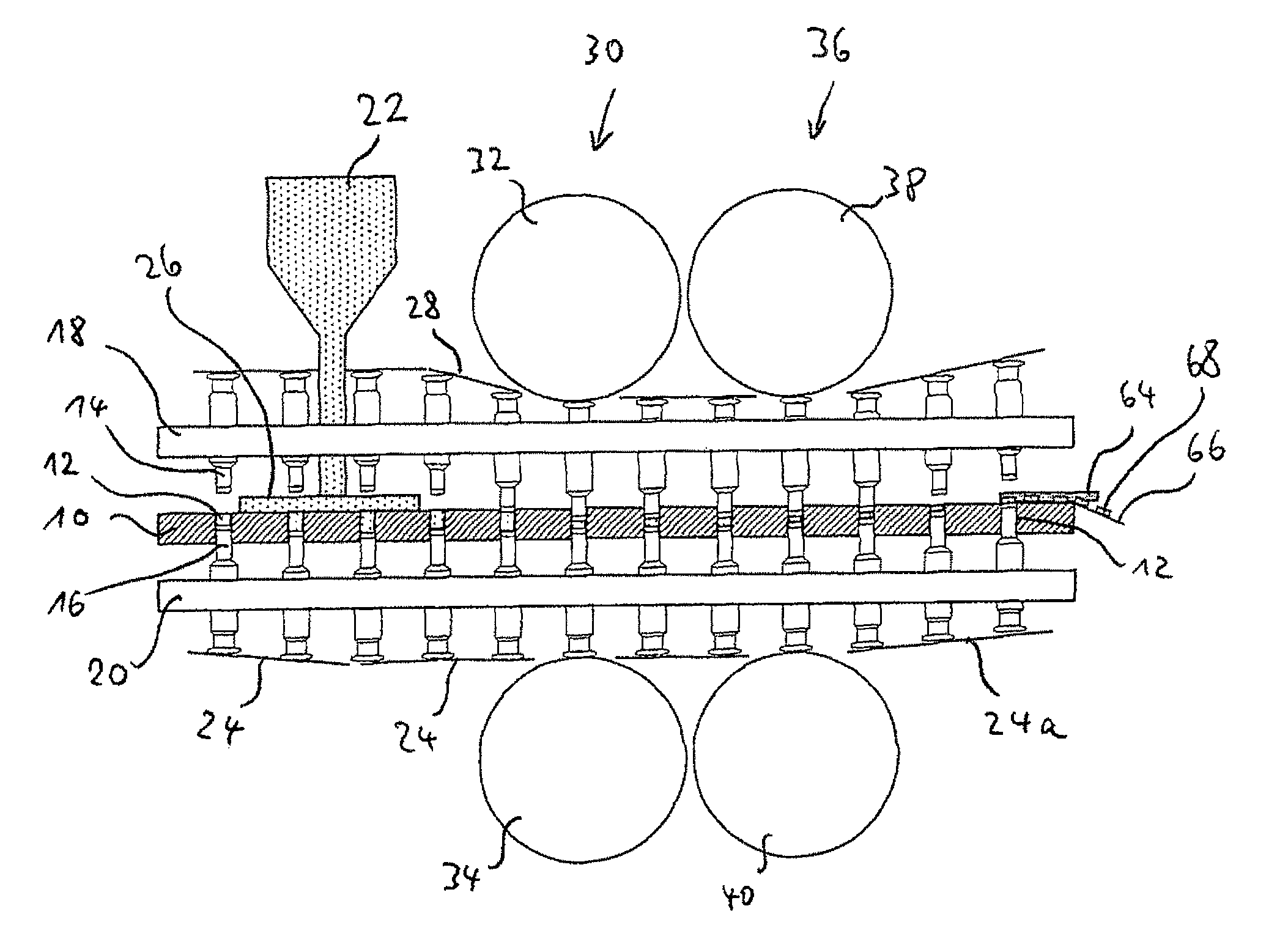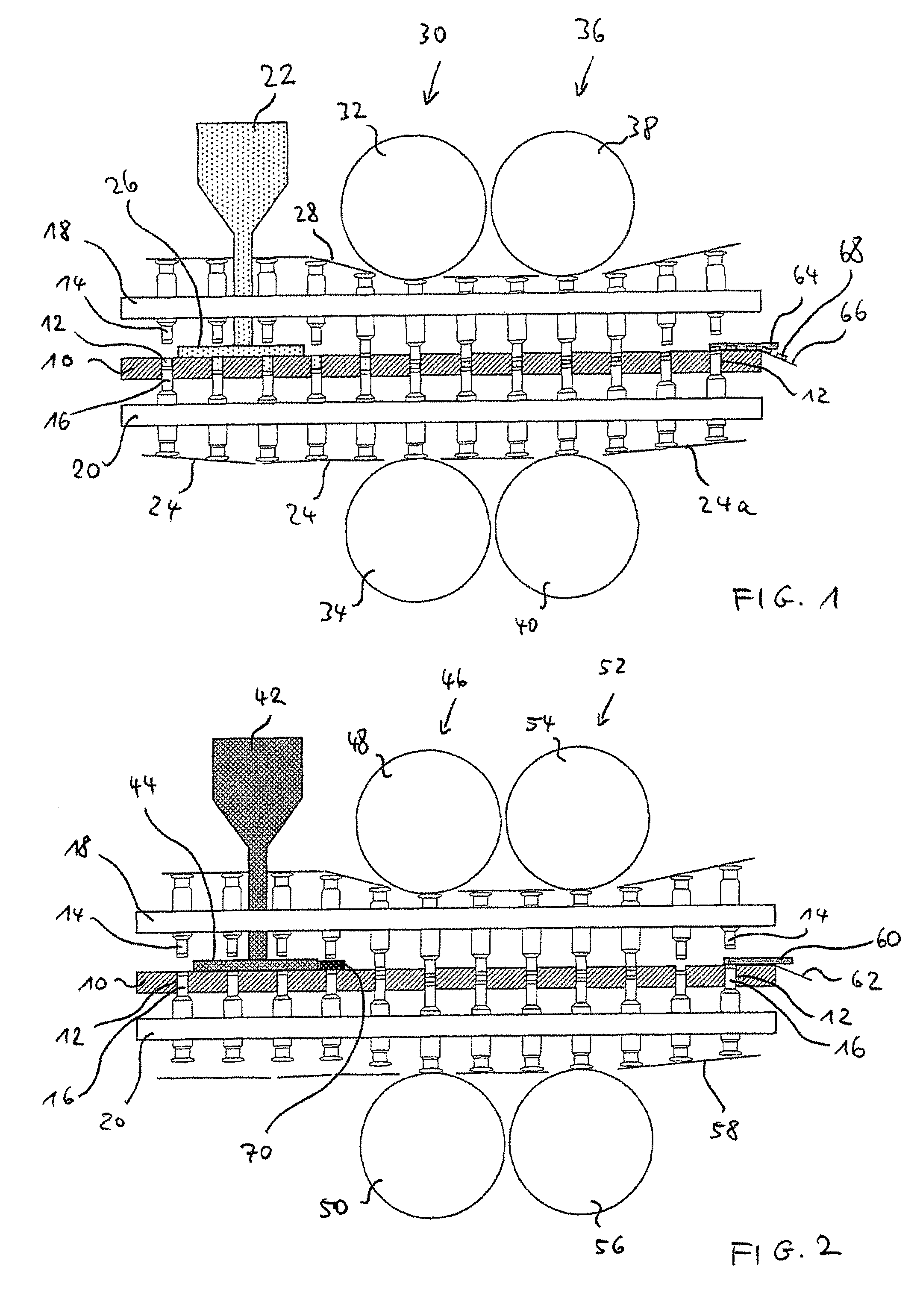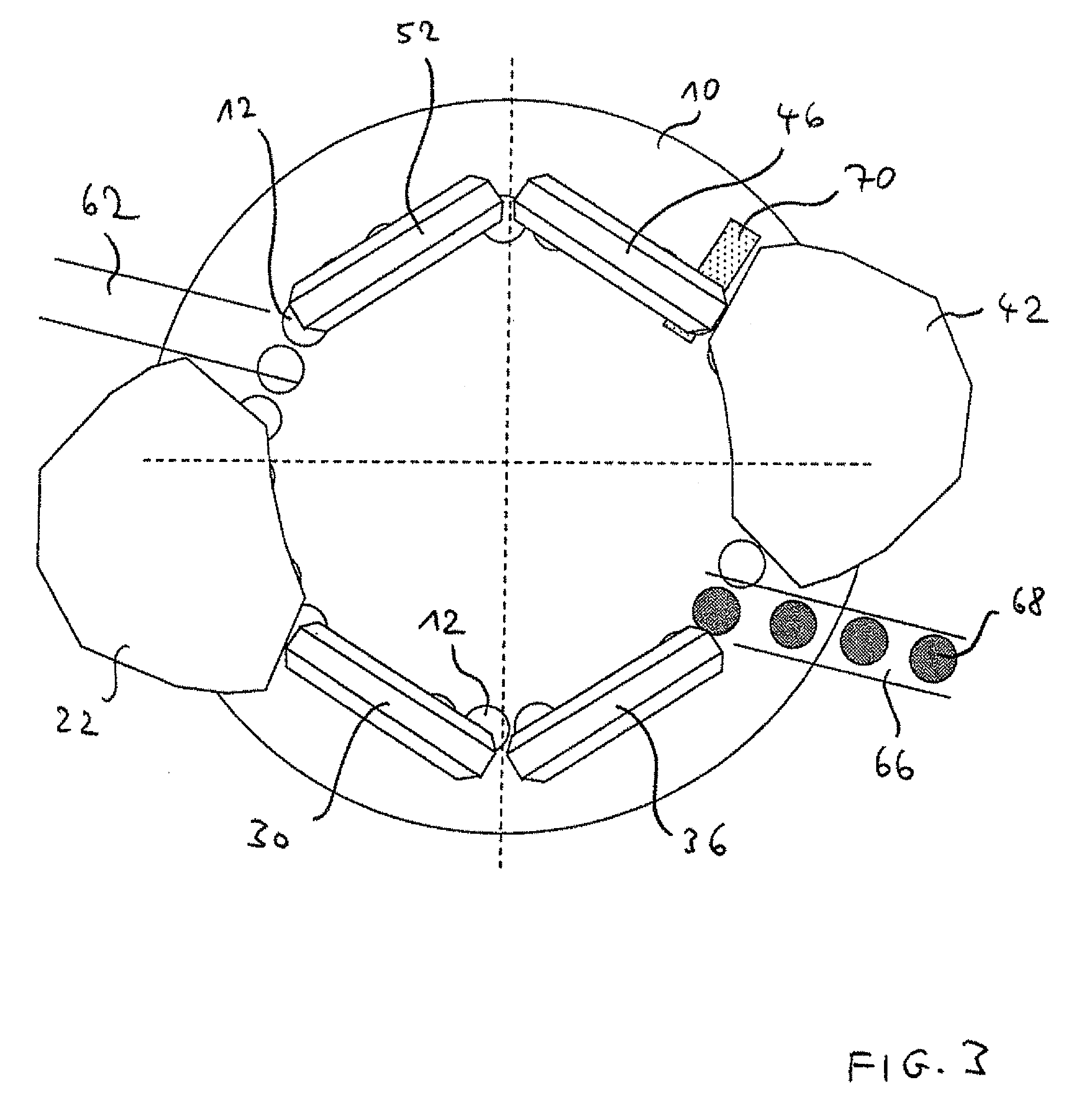Method for testing multilayer tablets
a multi-layer tablet and tablet technology, applied in the direction of shaping press rams, domestic objects, hanging devices for fruits, etc., can solve the problems of changing the vibration behaviour of the tablet press, and the measured weight of layer samples taken under these conditions is not always representative for tablets, so as to achieve convenient compression, reduce the height of the cylindrical, and improve the effect of compression
- Summary
- Abstract
- Description
- Claims
- Application Information
AI Technical Summary
Benefits of technology
Problems solved by technology
Method used
Image
Examples
Embodiment Construction
[0026]While this invention may be embodied in many different forms, there are described in detail herein a specific preferred embodiment of the invention. This description is an exemplification of the principles of the invention and is not intended to limit the invention to the particular embodiment illustrated
[0027]The rotary press depicted in the realisation example in the figures is a twin rotary press with two compression stations, which are shown in the FIGS. 1 and 2. In FIG. 3, the die plate of the twin rotary press is depicted in a top view. Same reference signs denote the same objects in the figures.
[0028]The rotary press has a die plate 10, which is driven rotatingly around a vertical axis. The die plate 10 has a row of passing through die holes 12. A pair of compression punches 14, 16 is assigned to each die hole 12. The upper compression punches 14 are axially movably mounted in a plate 18, which is driven synchronously with the die plate 10. In a corresponding manner, th...
PUM
| Property | Measurement | Unit |
|---|---|---|
| weight | aaaaa | aaaaa |
| height | aaaaa | aaaaa |
| weights | aaaaa | aaaaa |
Abstract
Description
Claims
Application Information
 Login to View More
Login to View More - R&D
- Intellectual Property
- Life Sciences
- Materials
- Tech Scout
- Unparalleled Data Quality
- Higher Quality Content
- 60% Fewer Hallucinations
Browse by: Latest US Patents, China's latest patents, Technical Efficacy Thesaurus, Application Domain, Technology Topic, Popular Technical Reports.
© 2025 PatSnap. All rights reserved.Legal|Privacy policy|Modern Slavery Act Transparency Statement|Sitemap|About US| Contact US: help@patsnap.com



